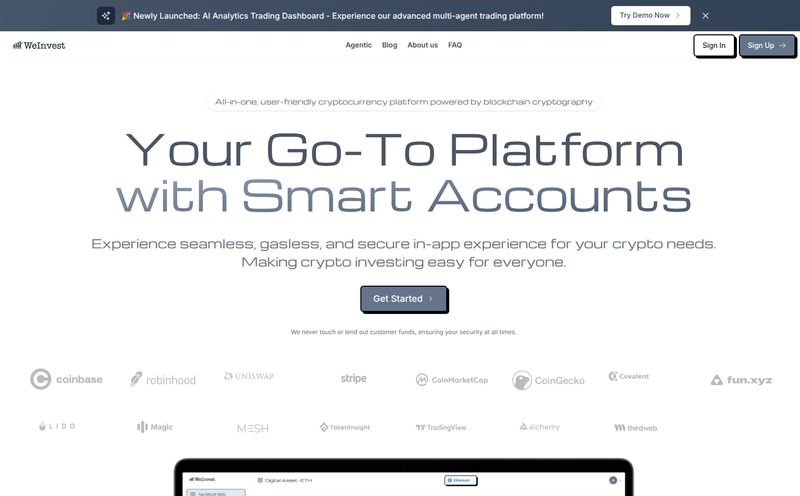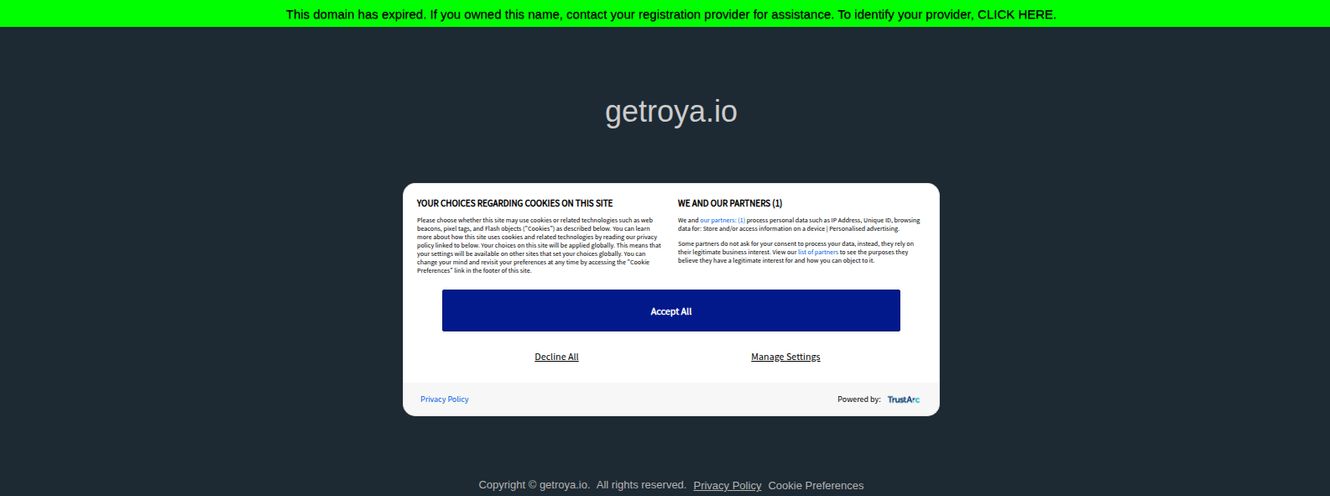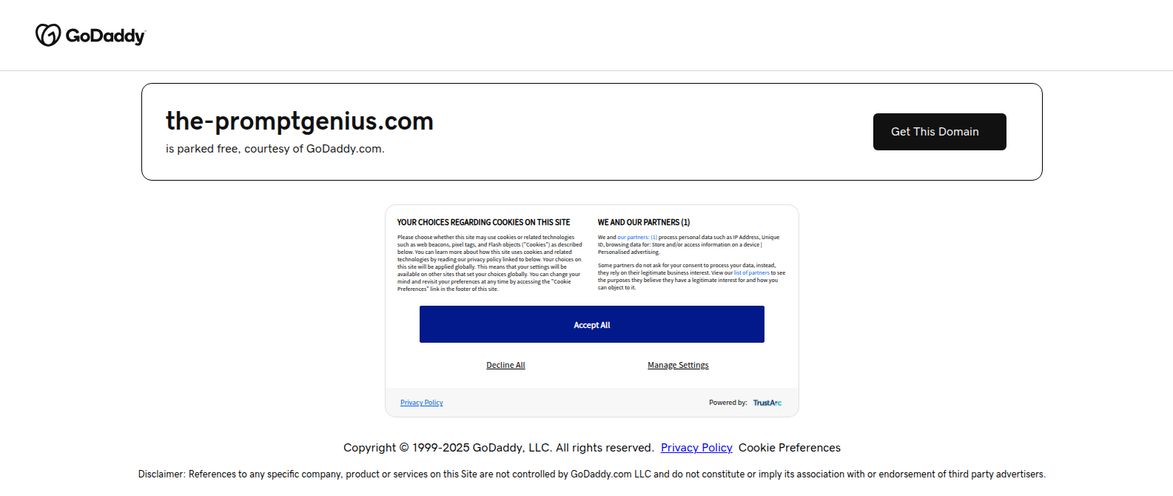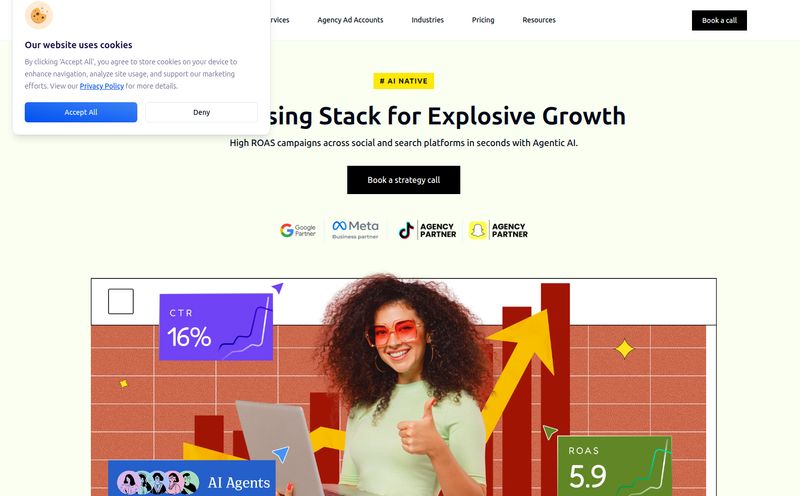We’ve all been there. Huddled around a monitor, looking at a new ad creative. It’s perfect. The copy sings, the image is stunning. You’re proud. Then, the feedback rolls in. “Can we make the logo bigger?” asks the CEO. “I’m just not feeling the blue,” says someone from sales. “My cousin’s dog wouldn’t click on that.”
Okay, maybe not that last one. But you get the picture. For years, creative approval has been a swamp of subjectivity, office politics, and the dreaded HiPPO—the Highest Paid Person's Opinion. We throw stuff at the wall, backed by gut feelings and hope, and then we spend thousands on CPCs to see what sticks. It's a model that’s always felt… well, broken.
Lately, I've been obsessed with finding ways to inject a little more science into the art of advertising. Not to kill creativity, but to give it a better chance of succeeding. That's what led me down the rabbit hole and right to a tool called Creative Score. The promise? To score your creative before it goes live, using actual behavioral science. Color me intrigued.
So, What Exactly is Creative Score?
Think of it like this: you get to have a team of neuroscientists, behavioral psychologists, and veteran marketers look over your shoulder for 30 seconds and give you a grade. That’s Creative Score in a nutshell. You upload your marketing asset—be it a Facebook ad, a landing page hero section, or an email campaign—and its AI gets to work.
Instead of vague feedback, it analyzes your work against proven principles. Things like: Does the headline grab attention? Is the imagery emotionally resonant? Is the call to action clear and compelling? It combines all this into a single, easy-to-understand “Creative Score” percentage. It's designed to take the guesswork out of the equation. No more arguments over which shade of orange converts best; you get objective data to guide your decisions.
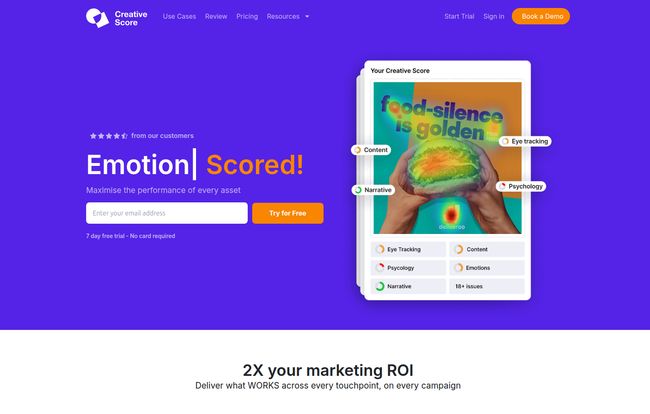
Visit CreativeScore
The Never-Ending Battle: Data vs. Gut in Ad Creative
For as long as I've been in this industry, there's been a cold war between the data nerds and the creative purists. The data folks see creative as a variable to be optimized, while the creatives see data as a straitjacket that stifles genius. I get both sides, I really do.
But what if it’s not a war? What if it’s a partnership? I don’t see a tool like Creative Score as a replacement for a brilliant designer or a sharp copywriter. I see it as a co-pilot. It’s the instrument panel that tells you if your altitude is dropping or if you’re burning fuel too fast. The pilot—the creative human—is still the one flying the plane. This tool just gives you the intel to avoid a crash landing and maybe even find a nice tailwind to boost your ROI.
It's about making our creativity smarter. It gives us, the marketers and creators, the ammunition to go back to that HiPPO and say, “I understand you prefer the other version, but according to behavioral analysis, this one is 40% more likely to drive action.” That changes the conversation entirely.
How Creative Score Claims to Stop the Budget Bleed
The website throws around some pretty bold claims: boost profitability, save 20+ hours a week, save thousands in wasted budget. Lofty goals. But when you break it down, the logic holds up.
- Saving Time and Sanity: The biggest time-sink in a creative workflow isn't the creation; it’s the revision and approval cycle. By providing an objective baseline, Creative Score short-circuits those endless subjective feedback loops. The conversation shifts from “I don’t like it” to “How can we improve the score from 75% to 85%?” It’s constructive, not personal.
- Boosting Actual Performance: This is the big one. The whole point is to launch ads that are primed to perform. By optimizing for clarity, emotional connection, and storytelling before you spend a dime on media, you’re stacking the deck in your favor. A higher-performing creative means a better click-through rate, a lower cost-per-click, and ultimately, a healthier return on ad spend (ROAS).
- Slashing Wasted Ad Spend: Every marketer knows the pain of launching five ad variations and having four of them bomb. That's 80% of your initial test budget down the drain. Creative Score helps you weed out the likely duds on your own computer, so the budget you do spend is focused on potential winners.
A Look Under the Hood at the Features
So what is this thing actually looking at? The analysis gets more detailed as you move up the pricing tiers, but it's all built on a solid foundation.
The Core Analysis (Image, Headline, and Text)
This is the bread and butter, available on all plans. It looks at the foundational elements of your ad. Is your image clear or cluttered? Does your headline create curiosity or confusion? Is the body text easy to read and persuasive? It’s the basic technical check-up that every ad should go through.
The "Sciencey" Stuff (Behavioural & Storytelling Analysis)
This is where things get really interesting, and it's what you get on the Growth plan and up. The Behavioural Science analysis digs into cognitive biases and psychological triggers. Is your ad using social proof effectively? Does it create a sense of urgency? The Storytelling analysis checks if your creative follows a coherent narrative arc. People are wired for stories, and ads that tell one—even a tiny one—almost always perform better.
Advanced Targeting and Reporting
For the real power users on the Professional plan, you can start personalizing the analysis. You can tell the tool your specific objective (e.g., brand awareness vs. direct conversion) and define your target audience. An ad that scores well for reaching Gen Z on TikTok might score terribly for reaching CFOs on LinkedIn. This feature accounts for that, which is pretty powerful stuff for agencies and in-house teams with diverse campaigns.
Let's Talk Money: Creative Score Pricing
Alright, the all-important question: what’s this going to cost? Creative Score runs on a subscription model with a few different tiers, and you get a discount for paying annually. The main difference between the plans is the number of “credits” you get per month and access to the more advanced analysis features.
Here’s a quick, no-nonsense breakdown of the monthly plans:
| Plan | Monthly Price | Key Features |
|---|---|---|
| Basic Plan | $99/month | 10 Credits, CreativeScore %, Image, Headline & Text Analysis. |
| Growth Plan | $399/month | 50 Credits, everything in Basic, plus Behavioural Science and Storytelling Analysis. |
| Professional Plan | $599/month | 100 Credits, everything in Growth, plus Personalised Objectives, Audiences, and Reporting. |
(Note: Prices are lower if you opt for an annual plan. Check their official pricing page for the latest details.)
My take? The Basic plan is perfect for freelancers or small businesses who want to dip their toes in the water. The Growth plan feels like the sweet spot for most marketing teams and small agencies. And the Professional plan is clearly built for larger agencies or brands running a high volume of diverse campaigns.
My Honest Take: The Good and The Not-So-Good
No tool is perfect, right? After playing around with it, here's my unfiltered perspective.
What I love is the objectivity. It’s a shield against bad, subjective feedback and a guide for making genuine improvements. The potential to save time and money is very real, and for any performance marketer, that’s music to your ears. It streamlines a process that is, frankly, a mess at most companies.
On the flip side, it’s not free. It's a monthly investment, and you have to be ready to use it to get your money's worth. There’s also a bit of a learning curve—not in using the tool itself, which is simple, but in understanding the why behind the scores. You have to be willing to learn a little about the principles it's based on. And finally, the credit limmits can be a concern. If you're an agency that cranks out 200 ad variations a month, the 100-credit Professional plan might feel tight.
Frequently Asked Questions
Does Creative Score replace human creativity?
Absolutely not. That’s the wrong way to look at it. It's a tool to enhance creativity, not replace it. It gives creators data to make their work more effective. It's a co-pilot, not the pilot.
What exactly is a "credit" and what happens if I run out?
One credit typically equals one analysis of a creative asset. If you run out, you'll likely have to wait until your credits reset the next month or look into upgrading your plan. It’s best to use them on your top contenders rather than every single rough draft.
Is there a free trial to test it out?
Yes, the website clearly advertises a free trial. It's the best way to see if the workflow and the insights are a good fit for your team before you commit to a paid plan.
Who is this tool really for?
I’d say it’s for performance marketers, PPC specialists, social media managers, ad agencies, and in-house creative teams who are held accountable for results and ROI. If you're tired of guessing, this is for you.
How is this different from just A/B testing?
It's a pre-emptive step. A/B testing is a live test that costs you time and ad spend to find a winner. Creative Score is a pre-flight check that helps you launch stronger candidates for your A/B test, increasing your odds of success and reducing the cost of finding a winner.
Is It Worth It? My Final Thoughts
So, where do I land on Creative Score? I’m genuinely optimistic. In a world saturated with ads, the ones that are built on a smart foundation of human psychology are the ones that will win. This tool isn't a magic wand that guarantees a viral campaign, but it is a powerful compass. It points you in the right direction, helping you navigate away from costly mistakes and toward more profitable creative.
For any marketer who's ready to move beyond “I think this will work” to “The data shows this will work,” it’s definitely worth a look. It represents a shift in how we approach the creative process—one that’s smarter, faster, and ultimately, more respectful of our marketing budgets.
